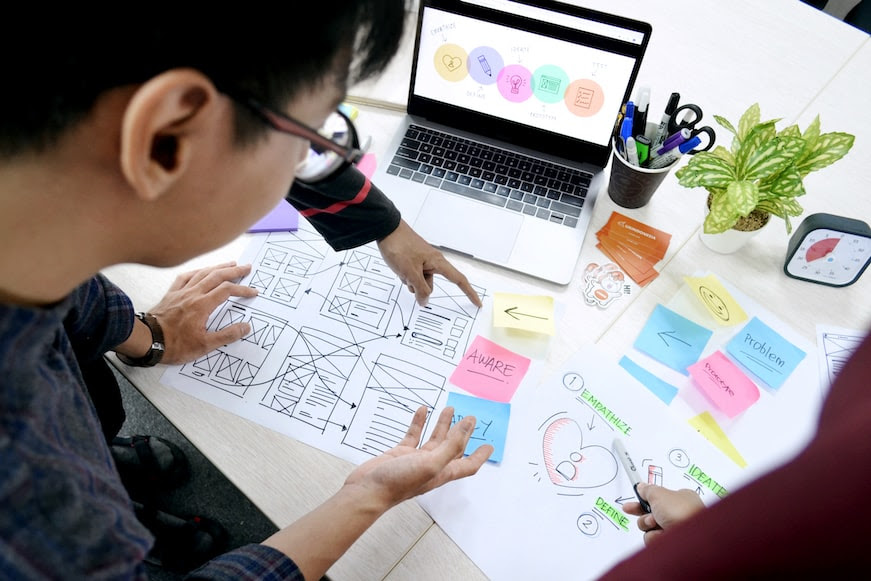Team development refers to the process of building and improving a team’s effectiveness and efficiency over time. Effective team development is crucial for organizations to achieve their goals and objectives. It can lead to increased collaboration, productivity, and overall success. Understanding the 5 stages of team development is an essential first step toward promoting team effectiveness and success.
These stages are a common framework used by organizations and teams to better understand the dynamics of group development and how to navigate them effectively.
According to statistics, 78% of people are looking for a more supportive work culture.
In this guide, we will define team development and provide an in-depth overview of the 5 stages of team development.
We will also discuss best practices for team development and offer tips for managing each stage effectively. By the end of this guide, you will have a solid understanding of team development and the tools necessary to build a successful team.
Five key stages of team development for organizational success
Stage 1: Forming
The forming stage is one of the first stages of team development, characterized by a sense of excitement and uncertainty among team members. During this stage, team members are just getting to know each other, and they may be unsure about their roles and responsibilities within the team.
Some of the key characteristics of the forming stage include:
- Polite behavior: Team members tend to be polite and courteous as they get to know each other.
- Uncertainty: There may be uncertainty about goals, roles, and expectations, as team members are just beginning to work together.
- Dependence on the leader: In the forming stage, team members may look to the team leader for guidance and direction.
To manage the forming stage effectively, it’s important to focus on building relationships and establishing clear goals and expectations.
Some tips for managing the forming stage include:
- Provide a clear vision: Ensure that team members have a clear understanding of the team’s goals and objectives.
- Establish roles and responsibilities: Clearly define each team member’s role and responsibilities within the team.
- Encourage open communication: Encourage team members to share their thoughts and ideas openly and honestly.
- Build relationships: Create opportunities for team members to get to know each other and build relationships.
- Lead by example: As the team leader, model the behavior and attitude you want to see from your team members.
By managing the forming stage effectively, you can set the foundation for a successful team and move on to the next stage of team development.
Stage 2: Storming

The storming stage comes after the forming stage in the stages of team development. It is characterized by conflict and disagreement among team members. During this stage, team members may begin to push back against the goals, roles, and expectations established in the forming stage.
Some of the key characteristics of the storming stage include:
- Conflict: Team members may disagree about goals, roles, and expectations, leading to conflict and tension.
- Competition: As team members begin to establish their roles within the team, they may compete with each other for status and recognition.
- Power struggles: The team leader may face challenges to their authority, as team members begin to question their decisions and direction.
To manage the storming stage effectively, it’s important to acknowledge and address conflict and disagreements within the team.
Some tips for managing the storming stage include:
- Encourage open communication: Provide opportunities for team members to express their opinions and concerns openly and honestly.
- Set ground rules: Establish ground rules for communication and behavior within the team to promote respect and collaboration.
- Address conflicts directly: Address conflicts and disagreements directly, and work with team members to find a resolution that works for everyone.
- Foster collaboration: Encourage team members to work together and find common ground, rather than competing with each other.
- Maintain a clear vision: Keep the team focused on the overall vision and goals, and use this as a framework for decision-making and conflict resolution.
By managing the storming stage effectively, you can move your team toward the next stage of team development and promote a more collaborative and productive work environment.
Stage 3: Norming

The norming stage comes after the second stage in the stages of team development, characterized by increasing collaboration and cohesiveness among team members. During this stage, team members begin to establish clearer roles and responsibilities, and work together to achieve common goals.
Some of the key characteristics of the norming stage include:
- Collaboration: Team members begin to work together more effectively, sharing ideas and supporting each other’s efforts.
- Clear roles: Team members establish clearer roles and responsibilities, and begin to understand each other’s strengths and weaknesses.
- Cohesiveness: The team becomes more cohesive, with members working towards common goals and supporting each other’s efforts.
To manage the norming stage effectively, it’s important to continue to foster collaboration and support within the team.
Some tips for managing the norming stage include:
- Provide feedback: Encourage team members to provide feedback to each other, both positive and constructive, to promote continuous improvement.
- Establish communication channels: Establish clear channels for communication within the team, such as regular meetings or online forums, to facilitate collaboration and idea-sharing.
- Celebrate successes: Recognize and celebrate the successes and achievements of the team, to build morale and reinforce the sense of cohesion.
- Foster a positive work environment: Maintain a positive work environment, by promoting open communication, mutual respect, and a sense of shared purpose.
- Encourage growth and development: Provide opportunities for team members to develop new skills and grow professionally, to promote engagement and motivation.
By managing the norming stage effectively, you can promote a strong, collaborative team that is well-positioned to achieve its goals and contribute to the success of your organization.
Unable to collaborate properly while working from home? Read our guide on how to collaborate effectively if your team is remote to accomplish objectives smoothly.
Stage 4: Performing

The performing stage is the fourth stage of team development, characterized by high levels of collaboration and productivity. During this stage, team members have established clear roles and responsibilities, and work together effectively to achieve their goals.
Some of the key characteristics of the performing stage include:
- High productivity: The team is highly productive, with members working efficiently and effectively towards common goals.
- Clear roles and responsibilities: Team members have clearly defined roles and responsibilities, and understand each other’s strengths and weaknesses.
- Strong collaboration: The team collaborates effectively, sharing ideas and supporting each other’s efforts.
- Focus on results: The team is focused on achieving results and is willing to put in the effort required to achieve its goals.
To manage the performing stage effectively, it’s important to maintain focus on the team’s goals and ensure that all members are contributing effectively.
Some tips for managing the performing stage include:
- Set clear goals: Ensure that the team’s goals are clear and well-defined so that all members are working towards the same objectives.
- Monitor progress: Regularly monitor the team’s progress toward its goals, and provide feedback and support as needed.
- Encourage continuous improvement: Foster a culture of continuous improvement, by encouraging team members to identify opportunities for improvement and implementing changes as necessary.
- Celebrate successes: Recognize and celebrate the successes and achievements of the team, to build morale and reinforce the sense of shared purpose.
- Address conflicts: Address conflicts and issues within the team in a timely and effective manner, to maintain the team’s productivity and collaboration.
By managing the performing stage effectively, you can ensure that your team is productive, collaborative, and well-positioned to achieve its goals and contribute to the success of your organization.
Indiscipline is decreasing your team productivity consistently? Read our guide on becoming more productive with the four disciplines of execution to attain your goals effectively.
Stage 5: Adjourning

The final stage of team development is adjourning, also known as the disbandment stage. This stage occurs when a team has accomplished its goals and is ready to disband.
During this stage, team members may feel a sense of loss or sadness as they say goodbye to their teammates and move on to new projects or teams.
Characteristics of the adjourning stage include reflecting on the team’s achievements, celebrating successes, and saying goodbye to team members.
This stage can also involve transitioning tasks to new teams or individuals, completing documentation or closing out projects, and reflecting on the lessons learned throughout the team’s development.
Tips for managing the adjourning stage effectively include taking the time to reflect on the team’s accomplishments and celebrate successes.
It’s also important to acknowledge and address any conflicts or unresolved issues that may have arisen during the team’s development. Additionally, team members should be given the opportunity to say goodbye and express their appreciation for their teammates and the work they accomplished together.
Overall, understanding and effectively managing the adjourning stage can help teams transition smoothly and set the stage for future success in future projects or teams.
Best practices for team development
Effective team development requires a combination of communication, collaboration, and productivity strategies. Here are some best practices for team development:
1. Establish clear goals and objectives
Ensure that team members understand the goals and objectives of the project and how their contributions will support those objectives. This can help to keep everyone focused and working towards a common goal.
2. Foster open communication
Encourage team members to communicate openly and frequently with each other. This can help to build trust and improve collaboration. It’s also important to establish clear communication channels and protocols, so everyone knows how and when to communicate.
3. Promote collaboration
Encourage team members to work together and share ideas. Consider using collaboration tools, such as project management software or team communication platforms, to facilitate collaboration and ensure everyone has access to important information.
4. Provide opportunities for professional development
Encourage team members to grow and develop their skills by providing opportunities for training and professional development. This can help to keep team members engaged and motivated, as well as improve the overall effectiveness of the team.
5. Monitor progress and adjust as needed
Regularly review the team’s progress and adjust strategies as needed to ensure the team is on track to meet its goals. Consider using performance metrics or other tools to track progress and identify areas for improvement.
Conclusion
In conclusion, understanding and implementing effective team development strategies is crucial for achieving organizational success.
Each stage of team development presents unique challenges and opportunities for growth, and it is essential to manage each stage effectively. By promoting communication, collaboration, and productivity, teams can work together to achieve their goals and contribute to the success of the organization.
While challenges may arise, with the right strategies and mindset, they can be overcome, leading to a stronger and more cohesive team. Ultimately, investing in team development is an investment in the future success of the organization.
Are you looking for mobile app developers for hire in Singapore to work collaboratively on your app project? Our professionals have decade-long experience in building cutting-edge tech solutions for iOS and Android platforms.









